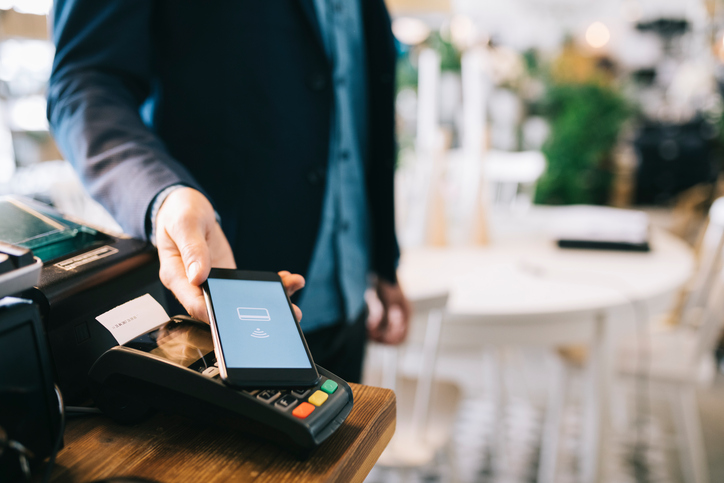Nearly every business in the business to consumer (B2C) space needs to have a payments option and most in the business to business (B2B) space need one, too. What used to be a convenience is now a requirement. The lack of many options not long ago meant that B2C and B2B payments were simple and streamlined. It used to be easy for a business. Sign up with a processor, get a terminal in your store or office, process payments and move along to the next initiative. But things are changing...
Payments Options Changing with Technology
Consumers have choices like wearable technology, mobile payments, contactless payments, online payments for e-commerce, peer to peer payment services, mobile wallets, RFID (radio frequency identification) technology, NFC (near field communication) technology, and non-bank payments providers. These choices make it tough for a business that wants to accept payments to figure out how to get to their customers in a way that is both convenient for the customer and cost-effective for the business.
One way to figure out how to reach your customers is to look at some of the trends going on in payments.
Contactless Payments on the Rise but Slow in the US
The US is way behind much of the world in the area of contactless payments. The leader is Australia, who according to a Westpac Bank study of their cardholders, use contactless payments 92% of the time as of December 2017, including in over 90% of face to face payments.
PaymentsWeek cites a study by The Economist that by 2022, contactless payments may get up to ⅓ of all electronic payments in the US. Why such a big discrepancy between Australia and the US?
- Americans use more cash than other countries thanks to the US Dollar’s strength and its position as the world’s primary reserve currency.
- Americans have big concerns over digital security. With so many digital hacks reported every month on the news from financial and other providers, this should come as no surprise. The American Express 2017 Digital Payments Survey indicates 37% of people have abandoned an online purchase due to security concerns. That’s a big number and a problem that we, as a country and an industry, will need to solve.
- Here in the US, we have every potential payment option known to man. If you were in a place like Kenya, who depends on cellular technology for payments and banking, then you’d have limited choices. You’d select the best provider available, the innovative fintech payments provider M-Pesa. Australia isn’t Kenya, but their big banks like WestPac and Macquarie, have embraced these technologies, making it easier for the consumer to adopt contactless payments. They don’t have payments options overload like we have in the US.
The US has room for tremendous growth in this area. The trend is telling us that if contactless payments are a good option for your retail business, or even a business where you travel to the customer, like a plumber or electrician, then you could be early and benefit greatly if you embrace this payments trend.
Digital Wallet Adoption Slow
JP Morgan commissioned a study, The Intersection of Payments and Commerce in the Digital World, to help its merchant customers better understand and prepare for tomorrow’s payment opportunities. Here are some of the more important pieces from the study:
- Consumers like the idea of digital wallets and payments in theory, yet adoption is slow with only 16% to have ever used a digital wallet. The study cites digital security as a primary concern that limits adoption, as well as low levels of understanding about digital wallets.
- Only 38% of those surveyed considered themselves informed about digital wallets and how they work.
- 62% of those surveyed prefer debit or ATM cards and 53% of those surveyed still prefer to use cash as their primary method of payment.
- Of businesses larger than $20 million in revenue, 56% accept digital wallets as a form of payment while only 25% of smaller than $20 million in revenue businesses do. The biggest concern for small business adoption is the cost associated with upgrading systems.
- 69% of people surveyed believe they will be making the majority of their payments through digital wallets within 5 years, making digital wallets the #1 payment choice tied with credit cards.
The trend is moving slowly upward, but increasing clarity and improved understanding should exponentially increase the number of digital wallet payments.
Are Digital Wallet and Contactless Payment Options Right for Your Business?
Two of the big advancements in the technology of payments is the digital wallet and the use of contactless payments. When implemented properly, these tools help your customers in new ways like
- Faster checkouts
- Easy to use/install rewards points or loyalty programs
- Convenience
- Couponing and easy gift card buys and redemption
Local retail stores and service providers, like the coffee shop or the local electrician, and small businesses, in general, can get way ahead of the trend and their competitors once they decide to adopt these technologies. If only 1 out of 4 lower level revenue businesses have these technologies, then you can differentiate yourself even more from your competitors in the marketplace.
